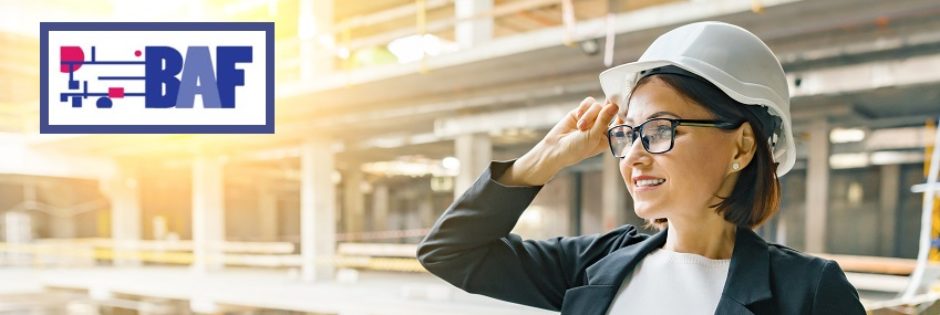Library remodels are essential investments that breathe new life into community spaces, but budget constraints often make these projects feel impossible. Studies show that updated library facilities can increase patron visits by 20-30% (Smith et al., 2020), while libraries with modern technology and design see a 40% increase in program attendance (Johnson & Lee, 2019). A well-designed library can improve community literacy rates by up to 10% (National Library Impact Study, 2021), making these renovations valuable community investments.
The challenge lies in maximizing these benefits while working within tight municipal budgets. Library administrators and board members face the difficult task of balancing essential improvements with fiscal responsibility. However, with strategic planning and creative approaches, public library improvements can be achieved without breaking the bank.
Understanding that every dollar counts when it comes to public library design trends, this guide provides practical strategies to help you navigate your library remodeling project efficiently and economically.

How to Cut the Cost of Remodeling a Public Library
Assess and Prioritize Your Library’s Needs
Before diving into any library renovation, conducting a thorough needs assessment forms the foundation of budget-conscious decision-making. This process involves evaluating current facilities, identifying critical issues, and understanding how patrons use the space.
Gather Input and Conduct Evaluations
Start by gathering input from staff, patrons, and community members through surveys and focus groups. Document structural issues, outdated technology, accessibility concerns, and areas that receive heavy use. This comprehensive evaluation helps distinguish between must-have improvements and nice-to-have upgrades.
Prioritize Safety and Compliance
Prioritization becomes crucial when working with a limited remodeling budget. Focus first on safety issues, regulatory compliance requirements, and improvements that will have the greatest impact on patron experience. For instance, upgrading fire suppression systems or ensuring ADA compliance should take precedence over aesthetic enhancements.
Develop a Ranking System
Create a ranking system that considers factors such as safety, functionality, patron impact, and long-term value. This approach ensures that your library remodel budget addresses the most critical needs first while leaving room for additional improvements as funds become available.
Harness DIY and Volunteer Efforts
Community involvement can significantly reduce labor costs while fostering a sense of ownership and pride in the library renovation project. Many tasks don’t require professional expertise and can be accomplished through volunteer efforts and in-house capabilities.
Organize Community Painting Days
Organize community painting days where volunteers help refresh walls and trim throughout the facility. This approach not only saves on labor expenses but also creates positive publicity for the project. Local service organizations, school groups, and civic clubs often welcome opportunities to contribute to community improvement projects.
Utilize Staff for Easy Work
Staff members can handle tasks like minor repairs, basic carpentry, and installation of simple fixtures. Consider partnering with local vocational schools or community colleges where students can gain practical experience while providing valuable services at reduced costs.
Create Cost-Effective Signage
Create DIY signage using repurposed materials or design simple, cost-effective graphics that can be printed in-house. This approach maintains consistency while keeping costs minimal. Remember to coordinate volunteer efforts carefully and ensure all work meets safety standards and building codes.
View Our Commercial Remodeling Solutions! 🔎
Make Smart Material Choices
Selecting appropriate materials significantly impacts both upfront costs and long-term maintenance expenses. Focus on durable, budget-friendly options that can withstand heavy public use while maintaining an attractive appearance.
Thoughtful Flooring
For flooring, consider polished concrete or durable vinyl flooring as alternatives to traditional tiling or hardwood. These materials offer excellent durability and easy maintenance at a fraction of the cost. Polished concrete provides a modern aesthetic while being extremely cost-effective for large spaces.
Repurposed Shelving
Repurpose existing shelving units with a fresh coat of paint or explore modular shelving systems that can be easily reconfigured as needs change. This flexibility proves valuable for adapting to evolving public library design trends without requiring complete replacement.
Used Furniture
Look for gently used furniture at government surplus auctions where quality pieces often sell at significant discounts. Partner with local vocational schools for custom-built pieces at lower costs while supporting educational programs. These partnerships often result in unique, high-quality furniture tailored to your specific needs.
Low-Maintenance Greenery
Consider native, low-maintenance plants and shrubs for landscaping to reduce ongoing maintenance costs. This approach creates an attractive exterior while minimizing long-term expenses and environmental impact.
Invest in Energy-Efficient Upgrades
Energy-efficient improvements may require higher upfront costs but deliver substantial long-term savings that help justify the investment. These upgrades often qualify for utility rebates and tax incentives that further reduce project costs.
LED lighting systems consume significantly less energy than traditional fluorescent fixtures while providing better illumination for reading and study areas. The reduced energy consumption and longer lifespan of LED fixtures translate to lower utility bills and maintenance costs over time.
Upgrading HVAC systems to more efficient models improves climate control while reducing operating expenses. Modern systems often include programmable thermostats and zoning capabilities that allow for precise temperature control in different areas of the library.
Energy-efficient windows and insulation improvements reduce heating and cooling costs while creating a more comfortable environment for patrons. These upgrades particularly benefit older library buildings that may have outdated insulation and single-pane windows.
Explore Grant Opportunities and Fundraising
Securing additional funding through grants and community fundraising can significantly expand your library remodel budget. Multiple organizations provide funding specifically for library improvements and public facility upgrades.
Research Grants
Research grants from the Institute of Museum and Library Services (IMLS) and the Library Services and Technology Act (LSTA), which frequently fund library renovation projects. State library associations and regional foundations also offer grant opportunities for public library improvements.
Partner with Local Business Owners
Partner with local businesses to secure in-kind donations or discounts from construction companies, suppliers, and furniture stores. These partnerships often benefit both parties, with businesses receiving community recognition in exchange for their support.
Organize Local Fundraisers
Organize community fundraising events such as book sales, auctions, or crowdfunding campaigns to engage residents and raise additional funds. These events not only generate revenue but also build community support for the project and increase awareness of the library’s needs.
Apply for grants well in advance of your project timeline, as the application and approval process can take several months. Maintain detailed records of all project expenses to satisfy grant reporting requirements.
Implement a Phased Approach
Breaking your library renovation into manageable phases spreads costs across multiple budget cycles while minimizing disruption to library services. This strategy allows you to complete essential improvements immediately while planning for future enhancements.
Start with the most critical areas that affect patron safety and regulatory compliance. Address fire suppression system upgrades, ADA compliance issues, and structural repairs in the first phase. These improvements form the foundation for future renovations.
Subsequent phases can focus on technology upgrades, furniture replacement, and aesthetic improvements. This approach allows you to evaluate the success of initial changes and adjust plans based on patron feedback and usage patterns.
Phased renovations also provide opportunities to secure additional funding between phases and incorporate lessons learned from earlier work. This flexibility proves valuable when working with evolving public library design trends and changing community needs.
Work with Trusted Contractors
While DIY efforts and volunteer work can reduce costs, certain aspects of library remodeling require professional expertise. Working with reputable and experienced general contracting teams ensures optimal results while avoiding costly mistakes and delays.
Professional contractors understand regulatory compliance requirements including building codes, fire safety regulations, and environmental standards. Their expertise helps navigate complex permitting processes and ensures all work meets required safety standards.
Experienced contractors like BAF Corporation in Indianapolis can also identify potential cost-saving opportunities and suggest alternative approaches that maintain quality while reducing expenses. Their knowledge of material suppliers and subcontractors often results in better pricing and more efficient project completion.
Request detailed quotes from multiple contractors and verify their experience with public projects and regulatory compliance. Check references and ensure they carry appropriate insurance coverage for public facility work.
In Summary
Creating an updated, welcoming library space doesn’t require an unlimited budget. Through careful planning, community involvement, and strategic choices, public library improvements can be achieved cost-effectively while delivering significant benefits to the community.
Remember that successful library remodeling projects balance immediate needs with long-term vision. By prioritizing essential improvements, leveraging community resources, and making smart material choices, you can create a modern facility that serves your community effectively for years to come.
The investment in library renovation pays dividends through increased patron engagement, improved community literacy rates, and enhanced civic pride. These benefits make budget-conscious library remodeling not just a practical necessity, but a valuable community investment.
Ready to transform your library space? Contact BAF Corporation for a consultation on your library’s remodeling needs and budget planning. Our experienced team can help you develop a comprehensive approach that maximizes your impact while respecting your fiscal constraints.
Related Post: Cost Cutting Advice for Commercial Renovations






















